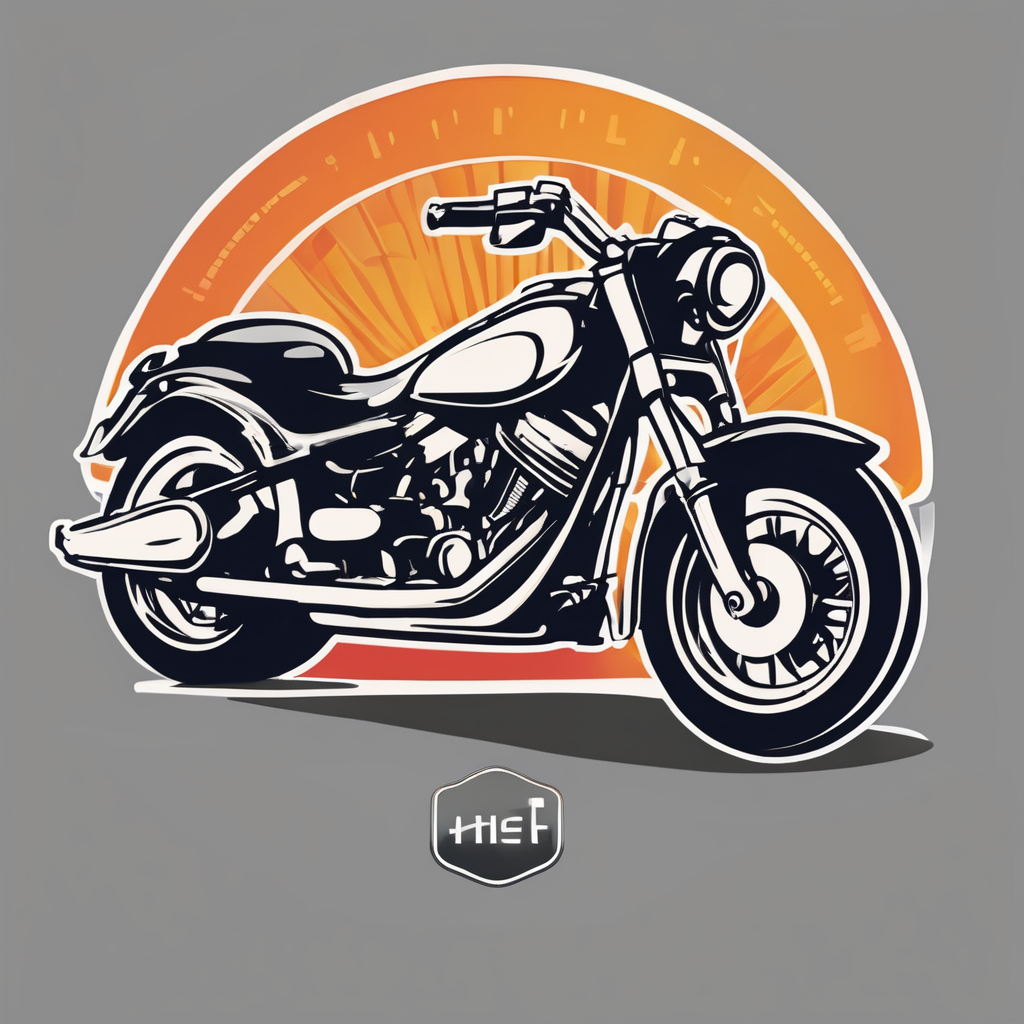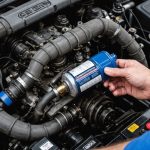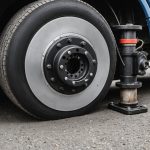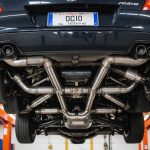Introduction to Aftermarket Suspension Lift Kits
When it comes to enhancing the performance of off-road vehicles, selecting the right aftermarket suspension lift kit is crucial. These lift kits offer substantial benefits such as increased ground clearance, improved off-road capabilities, and the ability to accommodate larger tires. With these enhancements, navigating challenging terrains becomes more manageable, providing an adventurous and exhilarating off-road experience.
The importance of choosing the right lift kit cannot be overstated, especially for British vehicles. Factors to consider include vehicle type, intended use, and compatibility with existing systems. The correct lift kit not only enhances the vehicle’s ability to tackle rugged landscapes but also ensures safety and stability while driving.
Have you seen this : Top Tips for Upholding Your British Performance Car’s Exhaust System: Best Practices for Optimal Maintenance
Suspension types vary widely, each tailored to specific needs. Coil springs, leaf springs, and shock absorbers are popular choices among off-road enthusiasts. Coil springs offer smoother rides, whereas leaf springs provide durability under heavy loads. Shock absorbers, on the other hand, are essential for controlling the movement of the suspension, thus enhancing vehicle control.
In conclusion, embracing the right aftermarket suspension components is a strategic move for any off-road enthusiast looking to maximize their vehicle’s performance, reliability, and driving experience in versatile and demanding environments.
In parallel : Essential Guide to Maintaining Hydraulic Brakes in British Commercial Lorries: Tips for Optimal Performance and Longevity
Preparation for Installation
Before diving into any project, it’s vital to ensure you’re well-prepared. This means having the right installation preparation methods in place, which can significantly enhance efficiency and safety. Let’s delve into the essentials of what you need to get started.
List of Tools Needed
Begin with a checklist of essential tools required for installation. This may include:
- Screwdrivers of varying types and sizes.
- An adjustable wrench.
- A level for ensuring balance.
- Safety goggles and gloves.
Having these tools at hand, organized and ready, can save time and prevent mishaps during the installation process.
Safety Gear and Precautions
When it comes to safety precautions, it’s crucial to never underestimate the importance of proper gear. Safety goggles and gloves protect your eyes and hands from sharp or hot materials. Ensure your workspace is well-lit to avoid errors and accidents. Follow best practices for handling tools to mitigate injury risk.
Setting Up the Workspace
Create an organized environment to streamline the installation preparation process. Clear your workspace of clutter and position tools within easy reach. Ensure there’s adequate lighting and ventilation, especially if working with adhesives or chemicals. By preparing thoughtfully, you set yourself up for smooth and efficient installation.
Step-by-Step Guide to Installation
Proper installation steps are crucial to ensuring a smooth lift installation process. It’s essential to get the alignment right and check if any vehicle modifications are needed to fit new components.
Removing the Stock Suspension
Begin by safely jacking up the vehicle. Ensure it is stable before you start to remove the stock suspension. Use a wrench to loosen the nuts on the struts and remove them. It’s important to keep track of which parts belong where to avoid confusion later.
Installing New Lift Components
This phase involves several detailed steps. Start by positioning new spindles, attaching them securely. Follow with fitting the lift blocks if required. It’s crucial to ensure that each component is aligned properly to avoid any issues later on. Misalignment can lead to poorly distributed weight and can affect the vehicle’s overall performance.
Replacing Shocks and Struts
Replacing shocks and struts requires attention to detail. Ensure the shock absorbers are installed in the correct position to maintain the vehicle’s performance. Incorrect installation can lead to inadequate vehicle handling and a less comfortable ride. Always refer to the manufacturer’s instructions for specifications regarding torque values and alignment adjustments.
Post-Installation Adjustments
Once a vehicle lift is completed, ensuring precise vehicle alignment is crucial. This stage not only boosts overall performance but prevents potential wear on tires and suspension components. Post-lift adjustments begin with a systematic alignment process. Carefully tuning the camber, caster, and toe angles guarantees the wheels’ optimal orientation, which is essential for maintaining stability.
Alignment process after installation
After a lift, each vehicle requires a detailed alignment. Aligning the wheels precisely enhances drivability and reduces undue stress on vital parts. Installing spacers or different alignment kits may be necessary to accommodate the new setup. Special attention to the steering axis is vital for dependable handling characteristics.
Road testing the vehicle
Following alignment, a thorough road test is imperative. This test involves driving the vehicle under varied conditions to assess any misalignment effects. Observe the vehicle’s response to steering and the feel of the suspension. Identifying issues during this phase is essential to avert long-term problems.
Fine-tuning vehicle settings
Finally, consider fine-tuning additional vehicle settings. Adjusting shock absorbers and tire pressure improves ride quality further. Regularly monitor and recalibrate these settings as needed to enhance comfort and performance, ensuring the vehicle operates efficiently on diverse terrains.
Troubleshooting Common Issues
When installing a lift kit, enthusiasts may face an array of installation errors that can be frustrating. To ensure a successful installation, it’s crucial to understand common problems and how to address them.
Identifying Installation Errors
The first step in troubleshooting is identifying where the installation went wrong. Errors often occur when parts are misaligned or improperly tightened. A telltale sign of issues includes suspension not sitting evenly or steering problems. Correct these by rechecking alignment protocols or consulting the manufacturer’s instructions thoroughly.
Fixing Suspension Noises
Post-installation suspension noises are not uncommon. Clunks and squeaks might indicate that certain components need readjustment or lubrication. To resolve this, inspect for loose bolts or improperly seated bushings. Tighten or replace as needed, ensuring that all parts are secure and well-lubricated.
Addressing Handling Issues
Handling issues post-installation can stem from incorrect setup of new suspension components. Tips to improve handling include double-checking the calibration of steering and suspension systems. This ensures your vehicle maintains stability and safety, making your off-road adventures more enjoyable.
Addressing these common problems promptly not only maintains vehicle performance but also prolongs the lifespan of the newly installed components, providing a more reliable setup.
Benefits of Installing a Lift Kit
Using a lift kit extends the performance improvement of your vehicle, enhancing both its capabilities and appeal. A major benefit is the increased ground clearance, crucial for conquering off-road challenges. By boosting the clearance, your vehicle can navigate rocky terrains without damaging the undercarriage, ensuring a smoother, uninterrupted journey.
Another key advantage is the improved approach and departure angles. This enhancement facilitates better maneuverability, especially on uneven surfaces. By altering these angles, even steep inclines or deep valleys become manageable, allowing adventurous journeys to be more accessible to enthusiasts.
Beyond the mechanical perks, a lift kit provides aesthetic enhancements. Whether it’s the draw of towering above other vehicles in traffic or simply achieving a more rugged look, many drivers appreciate these kits for transforming appearance. This not only personalizes your vehicle but potentially increases its resale value, as aesthetics often play a significant role in attracting buyers.
Considering a lift kit means embracing the dual benefits of functionality and style. With these improvements, your vehicle is prepared for whatever the terrain throws its way, while looking formidable all the while. Users find these enhancements invaluable, appreciating the balance of off-road capabilities with compelling appearance upgrades.
Conclusion and Summary of Key Takeaways
The installation summary is crucial when reviewing the steps for setting up. Careful attention to detail ensures your equipment operates at peak potential. Each part must be aligned precisely.
Consider these vital steps:
- Verify the compatibility of components before assembly.
- Follow instructions for performance enhancement.
The importance of maintaining and checking the kit post-installation cannot be overstated. Regular inspections can prevent minor issues from escalating. Dirt and moisture can affect performance over time. Therefore, routine checks safeguard longevity and functionality.
Enthusiasts often find that post-installation adjustments are necessary. Checking the setup under varied conditions lets users optimize balance and efficiency. This is significant when aiming for enhanced off-road experiences.
Ultimately, thoroughly understanding and implementing these practices contributes to achieving the best possible outcomes. Always remember: preparation and maintenance are key to reliability, which in turn maximizes enjoyment and capability.
Venturing off-road with confidence is best supported by knowing your equipment is in top form, transforming adventures into smooth, trouble-free experiences.











